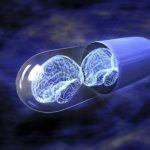California has been the object of many epithets over the years, and calling it the World Almond Capital isn’t far off the mark. To put this in perspective, the state produces 80% of the total almonds in the world, a monumental figure by any standards.
Raw almonds have this subdued feel while the roasted ones have an intense smoky or salty taste. However, bad almonds taste strange and bitter when cooked, which is why the industry works hard to isolate the good from the bad when raw. The problem is that not all damaged almonds will be easy to spot and pick out with the naked eye. The bad fruit will darken when cooked but you don’t want to go through all that; you just want to take to the oven what will come out edible and delicious.
The Food Scientist
Alyson Mitchell, a food chemist working at the University of California in Davis, has taken it upon herself to come up with a scientific approach to the isolating process. Her team has made great strides in the right direction and is now able to isolate the good from the bad 90% of the time. The projection is that when they are done with the research, companies will be able to pick damaged nuts off the processing line long before packaging.
Mitchell’s path to this solution has been long and windy. It started a few years back when she was approached by the Almond Board of California. The board knew that nuts that did not dry properly could be damaged on the inside but still appear perfect from the outside. The problem was that they did not have a reliable way of diagnosing the problem and weeding out the bad ones. Scientists knew that the bitter nuts do not come with any health risks on the consumer but still needed a few answers.
Then Mitchell and her team found the key
The solution to isolating raw damaged almonds, as the researchers found, is the spectrophotometer. Essentially, this is some kind of a scanner that looks at the building blocks of almonds, identifying the peculiarities visible from one nut from the other and throwing together a convincing analysis of the problem. Instead of people going and purchasing a spectrophotometer online, like they do, Mitchell and her team suggests leaving the science to them. The spectrophotometer is a highly advanced piece of equipment and it is needed in many areas of science and research.
The Key Lies In The Protein, Lipids And Carbs
In the study, Mitchell and Co. found that damaged almonds typically have lower levels of proteins, lipids and carbohydrates than the healthy ones. Now the group is trying to increase the efficiency of the process and have the approach applied at large scale, commercial levels.
This solution has been a long time coming if you ask anyone within the Industry. 17 years ago, Thomas Pearson a, scientist, found a way around the problem of concealed damage, only that his approach involved the use of infra red waves. The reason his method was not exactly a hit was because it detected the bad almonds only 88% of the time and offered no room for upwards improvement.
California produces a scary number of almonds, which is why the spectrophotometer method matters. The projection is that once the approach is perfected, it could ensure that very few bitter nuts make it to our palates.




